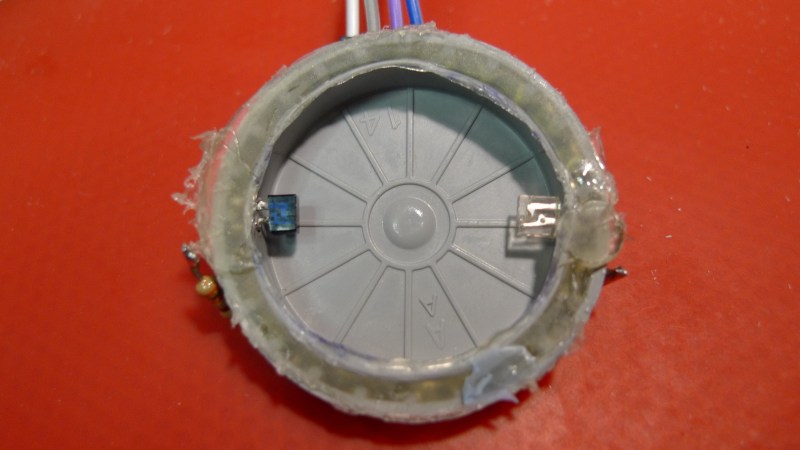Puff and Suck (or Sip and Puff) systems allow people with little to no arm mobility to more easily interact with computers by using a straw-like unit as an input device. [Ana] tells us that the usual way these devices are used to input text involves a screen-based keyboard; a cursor is moved to a letter using some method (joystick, mouse emulator, buttons, or eye tracking) and that letter is selected with a sip or puff into a tube.
[Ana] saw such systems as effective and intuitive to use, but also limited in speed because there’s only so fast that one can select letters one at a time. That led to trying a new method; one that requires a bit more work on the user’s part, but the reward is faster text entry. The Puff-Suck Interface for Fast Text Input turns a hollow plastic disk and a rubber diaphragm into bipolar pressure switch, able to detect three states: suck, puff, and idle. The unit works by having an IR emitter and receiver pair on each side of a diaphragm (one half of which is shown in the image above). When air is blown into or sucked out of the unit, the diaphragm moves and physically blocks one or the other emitter-receiver pair. The resulting signals are interpreted by an attached Arduino.
How does this enable faster text input? By throwing out the usual “screen keyboard” interface and using Morse code, with puffs as dots and sucks as dashes. The project then acts as a kind of Morse code keyboard. It does require skill on the user’s part, but the reward is much faster text entry. The idea got selected as a finalist in the Human-Computer Interface Challenge portion of the 2018 Hackaday Prize!
Morse code may seem like a strange throwback to some, but not only does the bipolar nature of [Ana]’s puff-suck switch closely resemble that of Morse code input paddles, it’s also easy to learn. Morse code is far from dead; we have pages of projects and news showing its involvement in everything from whimsical projects to solving serious communication needs.



















I worked several years on faster input for impaired people. Using Morse code to dispense with the time-consuming on-screen keyboard seems like a very productive idea. Anything that speeds up input is worth looking at.
Who put an smile face at the lower left hand corner?
I’ve always wondered why more interfaces don’t use the tongue. It’s very sensitive and it uses a cranial nerve instead of a cervical nerve.
Wouldn’t that be better and be a better preserved function?
Hmmm… I suppose you could use the tongue pressing on a pad of some sort for directional control and sip/puff for left/right buttons.
Just the other day there was a post with a trackpad on a pacifier.
Why not use BMP085 or similar?
For anyone curious about how those Morse code paddles work, the search term you want is “iambic paddles” or “iambic keyer”.
With a single paddle, it’s dits on one side, dahs on the other.
Dual paddle, squeeze both , didah ????
Unfortunately , not possible with breath control ☹️
Has anyone tried a harmonica as an input device? Seems you could have the entire alphabet that way.